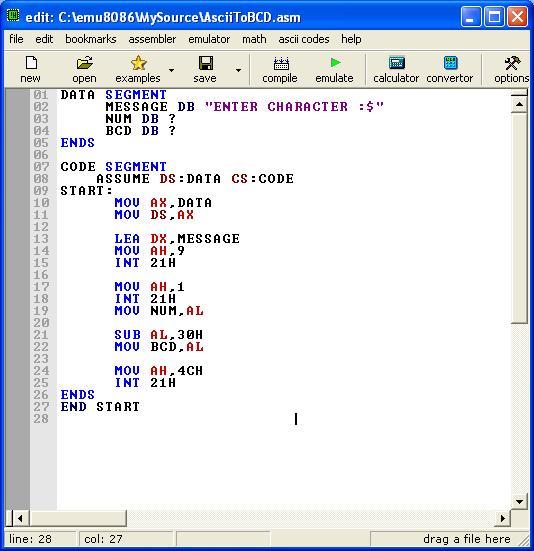
Specifically, we have the output from hexdump -C of a very small png image. The code block below demonstrates this idea for a one-by-one pixel png image. Transforming Files To Hexadecimal C++ Arrays Similarly, for 3D graphics applications, you may want to include the contents of your shader files in a C++ binary array, so you can easily feed it to OpenGL/Vulkan without having to read files from the disk.

Long story short, making a binary blob for the contents of a file is a perfectly valid and fast way to use the binary contents of the file in your code.įor example, you may want to store a small icon image for your GUI application in your code, and not ship that image separately. Why Include Files As Hexadecimal Byte Arrays In Your Code? In this post, we look at how to convert files to C++ hexadecimal arrays, using built-in terminal tools. Doing so will essentially ship whatever binary content you included with your binary, removing the need to also distribute files with your programs. Another way to learn embedded development is through the Arduino (AVR) system, but that gets you out of C and into a beginner language.Occasionally, you may want to include the content of your files in your code. Also, the AT89C51 (now the AT89S51) uses an older 8051 core, you may find more modern processors like the ATmega, PIC18, or (much more new, but more complex) ARM cores (Cortex-M3/M0, probably) to be more user-friendly and well-supported. You may find native programming a bit easier if you want a slower learning curve. These are some of the most basic steps of embedded software development. The usual way to do this is to use a programmer, though it is often convenient to program the device with a bootloader first, and then use this program to copy the. This is generally referred to as a toolchain, but may be informally referred to as a compiler. It also brings in any external object files for which you don't have the source code (or have already compiled it in a previous iteration). hex file, and gives them the addresses required by the device. The linker puts all the object files together into the series of hex digits in the.The assembler converts those into object files.

The preprocessor converts #include and #define macros, and also processes any conditional compilation (#if) symbols.

There are a number of steps which have to happen between the C code you have and loading data onto the device:


 0 kommentar(er)
0 kommentar(er)
